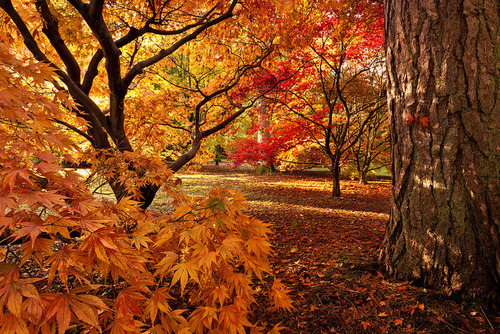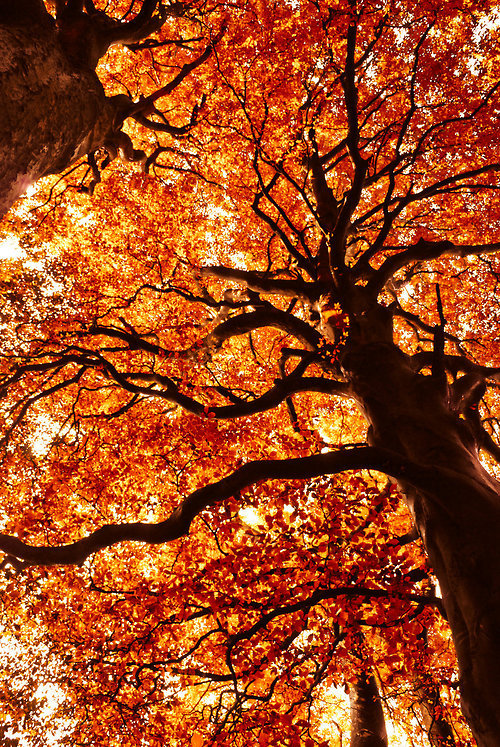The Instrument Deployment Camera (IDC), Located On The Robotic Arm Of NASA’s InSight Lander, Took This

The Instrument Deployment Camera (IDC), located on the robotic arm of NASA’s InSight lander, took this picture of the Martian surface on Nov. 26, 2018, the same day the spacecraft touched down on the Red Planet. The camera’s transparent dust cover is still on in this image, to prevent particulates kicked up during landing from settling on the camera’s lens. This image was relayed from InSight to Earth via NASA’s Odyssey spacecraft, currently orbiting Mars.
Credits: NASA/JPL-Caltech
More Posts from Monstrous-mind and Others
🍂🍁🌄




Magic night
Aleksey R.
🎃🍂🍁🌌☕
Halloween cat
🐈🐾🍁🍂🎃🍂🍁🌨🌄


🍁🍂🌄🐈










Halloween hike/drive
October 31st, 2018
Front Royal, VA


cozy autumn days
Everything You Need to Know About the Aug. 21 Eclipse
On Aug. 21, all of North America will experience a solar eclipse.

If skies are clear, eclipse-watchers will be able to see a partial solar eclipse over several hours, and some people – within the narrow path of totality – will see a total solar eclipse for a few moments.
How to Watch
It’s never safe to look at the Sun, and an eclipse is no exception. During a partial eclipse (or on any regular day) you must use special solar filters or an indirect viewing method to watch the Sun.

If you have solar viewing glasses, check to make sure they’re safe and undamaged before using them to look at the Sun. Make sure you put them on before looking up at the Sun, and look away before removing them. Eclipse glasses can be used over your regular eyeglasses, but they should never be used when looking through telescopes, binoculars, camera viewfinders, or any other optical device.
If you don’t have eclipse glasses, you can still watch the eclipse indirectly! You can make a pinhole projector out of a box, or use any other object with tiny holes – like a piece of cardstock with a hole, or your outstretched, interlaced fingers – to project an image of the partially eclipsed Sun onto the ground.

Of course, if it’s cloudy (or you’d just rather stay inside), you can watch the whole thing online with us at nasa.gov/eclipselive. Tune in starting at noon ET.
If you’re in the path of totality, there will be a few brief moments when it is safe to look directly at the eclipse. Only once the Moon has completely covered the Sun and there is no light shining through is it safe to look at the eclipse. Make sure you put your eclipse glasses back on or return to indirect viewing before the first flash of sunlight appears around the Moon’s edge.

Why do eclipses happen?
A solar eclipse happens when the Moon passes directly between the Sun and Earth, casting its shadow down on Earth’s surface. The path of totality – where the Moon completely covers the Sun – is traced out by the Moon’s inner shadow, the umbra. People within the Moon’s outer shadow, the penumbra, can see a partial eclipse.

The Moon’s orbit around Earth is tilted by about five degrees, meaning that its shadow usually doesn’t fall on Earth. Only when the Moon lines up exactly between the Sun and Earth do we see an eclipse.

Though the Sun is about 400 times wider than the Moon, it is also about 400 times farther away, making their apparent sizes match up almost exactly. This is what allows the Moon to block out the Sun’s bright face, while revealing the comparatively faint, pearly-white corona.
The Science of Eclipses
Eclipses are a beautiful sight to see, and they’re also helpful for our scientists, so we’re funding eleven ground-based science investigations to learn more about the Sun and Earth.

Total solar eclipses reveal the innermost regions of the Sun’s atmosphere, the corona. Though it’s thought to house the processes that kick-start much of the space weather that can influence Earth, as well as heating the whole corona to extraordinarily high temperatures, we can’t study this region at any other time. This is because coronagraphs – the instruments we use to study the Sun’s atmosphere by creating artificial eclipses – must cover up much of the corona, as well as the Sun’s face in order to produce clear images.

Eclipses also give us the chance to study Earth’s atmosphere under uncommon conditions: the sudden loss of solar radiation from within the Moon’s shadow. We’ll be studying the responses of both Earth’s ionosphere – the region of charged particles in the upper atmosphere – and the lower atmosphere.
Learn all about the Aug. 21 eclipse at eclipse2017.nasa.gov, and follow @NASASun on Twitter and NASA Sun Science on Facebook for more. Watch the eclipse through the eyes of NASA at nasa.gov/eclipselive starting at 12 PM ET on Aug. 21.
Make sure to follow us on Tumblr for your regular dose of space: http://nasa.tumblr.com
🍂🍁🎃🍁🍂🌄










Autumn Colours
↳ Orange
-
 eventualeden reblogged this · 5 years ago
eventualeden reblogged this · 5 years ago -
 rickcd67 liked this · 5 years ago
rickcd67 liked this · 5 years ago -
 acedia-me liked this · 5 years ago
acedia-me liked this · 5 years ago -
 notisaidthechicken liked this · 5 years ago
notisaidthechicken liked this · 5 years ago -
 metalzoic liked this · 5 years ago
metalzoic liked this · 5 years ago -
 16fahri liked this · 5 years ago
16fahri liked this · 5 years ago -
 legendarymasterwolf liked this · 5 years ago
legendarymasterwolf liked this · 5 years ago -
 lovinghyacinths liked this · 5 years ago
lovinghyacinths liked this · 5 years ago -
 limegreenbabx liked this · 5 years ago
limegreenbabx liked this · 5 years ago -
 macabreerudition reblogged this · 5 years ago
macabreerudition reblogged this · 5 years ago -
 thatsnotmycow liked this · 5 years ago
thatsnotmycow liked this · 5 years ago -
 carlosdmoura liked this · 5 years ago
carlosdmoura liked this · 5 years ago -
 backroomswater liked this · 5 years ago
backroomswater liked this · 5 years ago -
 vedderlover liked this · 5 years ago
vedderlover liked this · 5 years ago -
 hollywoodundeadroger liked this · 5 years ago
hollywoodundeadroger liked this · 5 years ago -
 ged1945 liked this · 5 years ago
ged1945 liked this · 5 years ago -
 fagdykefrank liked this · 5 years ago
fagdykefrank liked this · 5 years ago -
 jonjo58 liked this · 5 years ago
jonjo58 liked this · 5 years ago -
 enculettengc7331 liked this · 5 years ago
enculettengc7331 liked this · 5 years ago -
 nikandrros liked this · 6 years ago
nikandrros liked this · 6 years ago -
 casseastuffheresorry-blog liked this · 6 years ago
casseastuffheresorry-blog liked this · 6 years ago -
 turinsmachine liked this · 6 years ago
turinsmachine liked this · 6 years ago -
 mickaelm liked this · 6 years ago
mickaelm liked this · 6 years ago -
 pkamour reblogged this · 6 years ago
pkamour reblogged this · 6 years ago -
 ploombikaz liked this · 6 years ago
ploombikaz liked this · 6 years ago -
 kingdoms-bounty reblogged this · 6 years ago
kingdoms-bounty reblogged this · 6 years ago -
 theabsurdvictory reblogged this · 6 years ago
theabsurdvictory reblogged this · 6 years ago -
 richardreings23-blog liked this · 6 years ago
richardreings23-blog liked this · 6 years ago -
 captainhulla liked this · 6 years ago
captainhulla liked this · 6 years ago -
 kindasrta reblogged this · 6 years ago
kindasrta reblogged this · 6 years ago -
 aimingforinnerpeace liked this · 6 years ago
aimingforinnerpeace liked this · 6 years ago -
 astronautsailor liked this · 6 years ago
astronautsailor liked this · 6 years ago -
 jovem-engineer reblogged this · 6 years ago
jovem-engineer reblogged this · 6 years ago -
 delusionalsun liked this · 6 years ago
delusionalsun liked this · 6 years ago -
 alwayssterling liked this · 6 years ago
alwayssterling liked this · 6 years ago -
 dee--x93 reblogged this · 6 years ago
dee--x93 reblogged this · 6 years ago -
 bellebehindagun reblogged this · 6 years ago
bellebehindagun reblogged this · 6 years ago -
 bellebehindagun liked this · 6 years ago
bellebehindagun liked this · 6 years ago -
 ace-off-hearts liked this · 6 years ago
ace-off-hearts liked this · 6 years ago -
 cosmic-shark liked this · 6 years ago
cosmic-shark liked this · 6 years ago -
 tootiredforbs reblogged this · 6 years ago
tootiredforbs reblogged this · 6 years ago -
 sorryloveyoulostme liked this · 6 years ago
sorryloveyoulostme liked this · 6 years ago
My ambition is handicapped by laziness. -C. Bukowski Me gustan las personas desesperadas con mentes rotas y destinos rotos. Están llenos de sorpresas y explosiones. -C. Bukowski. I love cats. Born in the early 80's, raised in the 90's. I like Nature, Autumn, books, landscapes, cold days, cloudy Windy days, space, Science, Paleontology, Biology, Astronomy, History, Social Sciences, Drawing, spending the night watching at the stars, Rick & Morty. I'm a lazy ass.
222 posts